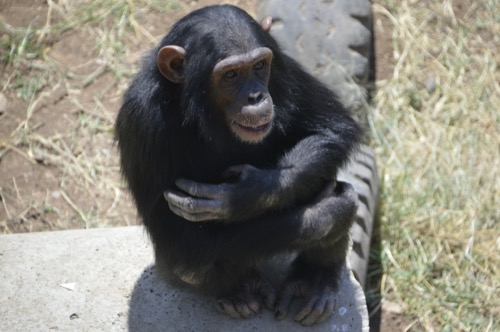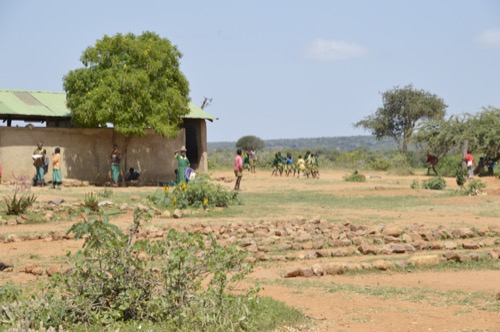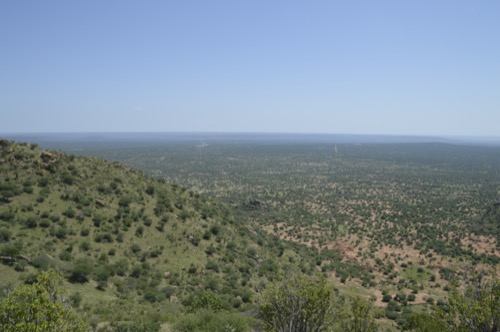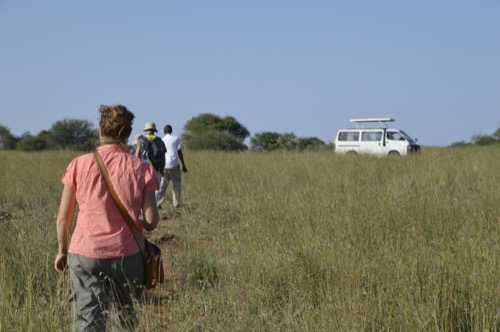Research
ZEBRA SOCIALITY
Animal societies derive from the social relationships that exist among its members. Behavioral ecologists have focused on core social relationships that underlie mating systems to determine how environmental features shape social behavior. But interactions outside of core groups also play important roles in shaping the structure of multi-level societies, such as those of zebras. Our research on plains and Grevy’s zebras examines how natural and sexual selection operates within complex and multi-tiered societies to influence leadership, competitive, cooperative and reproductive patterns. We also examine how these behavioral patterns feedback and affect population processes and use these insights to design conservation and management interventions when population numbers and vital rates do not foster sustainable populations.
EWASO WATER PROJECT
Rubenstein along with Princeton colleagues and Kenyan scientists are studying how water moves over and through land, how different plants affect water retention, how water movements affect wildlife and livestock behavior and ecology, and how a scarcity of resources affects people's land use patterns. Rubenstein's Princeton colleagues at Mpala include professors in civil and environmental engineering, electrical engineering, politics and international affairs and scientists at the University of Nairobi. A recent article by Lizzie King describing the project and another by Trenton Franz updating the project appeared in the Laikipia Wildlife Forum newletter.
NUTRITION PROJECT
Wildlife and livestock typically share semi-arid grasslands in Kenya. On such landscapes environments change markedly and unpredictably, driving small and large-scale movements of wildlife and livestock as they seek suitable pastures and water. Understanding dietary preferences, especially their ability to meet dietary targets should provide insights into the causes of these movements and effective strategies for reducing conflict between people, their herds and wildlife. In Central Kenya the Mpala Research Center and Conservancy (MRCC) and the Ol Pejeta Conservancy (OPC) represents an ideal locations to perform controlled feeding experiments that will examine the role of macronutrient balancing in the movements of zebras―the most abundant wildlife grazer in the ecosystem―as well as cattle and sheep on both commercial ranches, where livestock density is low, and pastoral group ranches, where it is high.
NETWORKING PROJECT
Understanding the deep social structure of populations requires tools that can characterize fine-grained patterns of social relationships and associations. By doing so, a range of questions about social dynamics can be addressed. Which individuals are leaders and to what degree do these leaders control the behavior of others? Are social groups likely to disperse when certain animals join or leave the population? How do the social interactions change with external events such as presence of a predator? To what degree can we predict future social interactions based on past information? Unfortunately, our ability to analyze data necessary to answer these types of questions seriously lags our ability to collect it. In particular, most previous approaches to analyzing social data are essentially static in that all information about the time and ordering of social interactions is discarded. In a collaborative study involving field biologists and computer scientists we are creating algorithmic and conceptual tools that explicitly address the time and order of social interactions between individuals and are testing the accuracy and predictive power of new dynamic algorithms and conceptual tools by characterizing the social structure of horses and zebras (equids) both before and after human- or predator-induced perturbations to the social network.
DECISION-MAKING and MOVEMENT ECOLOGY
Behavior is an animal’s first means of coping with rapidly changing environments. Yet understanding why individuals make the decisions that they do, and how these shape the actions of others within their societies, populations and communities remains an exciting challenge. Actions at one level often shape the behavior of higher levels of organization. By gathering data from free-ranging animals and by building models I study how individuals extract and then use information from their physical and social environments to solve problems posing competing demands. In making movement decisions, animals must balance their needs for multiple resources such as nutrients, water, safety, and mating opportunities. In addition to responding to local cues as they choose where to go, animals may also draw upon past experience about resources distributions and their values across the landscape.
EVOLUTION OF SOCIAL NORMS
Many of the core problems facing humanity—among them environmental degradation, overpopulation, and indeed armed conflicts among peoples—have arisen because we live in a Global Commons. What individuals do affects the general welfare. Sometimes, individual selfish actions fortuitously prove beneficial to others; but in too many cases, they do not. Indeed, from the most simplistic evolutionary point of view, the default assumption is that natural selection will emphasize individual gains above those of society. Individual agents, whether these be people or institutions or nations, act in their own self-interest, often at cost to societies, the biosphere, and hence the global community and future generations. Yet, cooperation and collective behavior, even apparent altruism, are widespread in Nature. The mechanisms that generate this cooperation, however, generally apply only in small groups or tight social networks. My research explores how we can extend these insights into how cooperation emerges and maintains large and diffuse societies, where status, reputation and even systems of justice and morality shape social relationships. I hope to identify ways in which require “mutual coercion, mutually agreed upon”—Garrett Hardin’s oft-cited solution to avoiding the ‘Tragedy of the Commons’—can be realized.
DAMSEL FISH
Small reef dwelling fish often live in groups that coalesce round isolated coral heads. Many group members settle from the plankton, but others actively join groups by moving among coral heads. How often they do individuals or aggregations do so; what conditions motivate change; what role does phenotype matching and familiarity play in the decision to stay or leave; and how is a quorum reached and to what degree do collective decisions succeed are all questions that my collaborative research with fish biologists working on Australia’s Great Barrier Reef are exploring.











